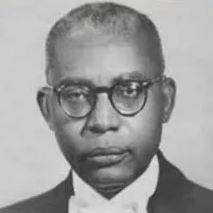Jean-Jacques Dessalines
| Jacques I | |||||
|---|---|---|---|---|---|
| Emperor Jacques I of Haiti | |||||

Posthumous portrait of Dessalines from the 19th century
|
|||||
| Emperor of Haiti | |||||
| Reign | 2 September 1804 – 17 October 1806 | ||||
| Coronation | 8 October 1804 | ||||
| Predecessor | Empire founded | ||||
| Successor |
Empire abolished Henri Christophe (as President of North Haiti) Alexandre Pétion (as President of South Haiti) |
||||
|
|
|||||
| Born |
20 September 1758 Cormier, Grande-Rivière-du-Nord, Saint-Domingue |
||||
| Died |
17 October 1806 (aged 48) Pont Larnage (now Pont Rouge), near Port-au-Prince, Haiti |
||||
| Consort | Marie-Claire Heureuse Félicité | ||||
|
|||||
Jean-Jacques Dessalines (French pronunciation: ?[??? ?ak d?s.salin]; 20 September 1758 – 17 October 1806) was a leader of the Haitian Revolution and the first ruler of an independent Haiti under the 1805 constitution. Initially regarded as governor-general, Dessalines later named himself Emperor Jacques I of Haiti (1804–1806). He is regarded as a founding father of Haiti.[1]
Dessalines served as an officer in the French army, when the colony was fending off Spanish and British incursions. Later he rose to become a commander in the revolt against France. As Toussaint Louverture's principal lieutenant, he led many successful engagements, including the Battle of Crête-à-Pierrot.
After the betrayal and capture of Toussaint Louverture in 1802, Dessalines became the leader of the revolution. He defeated a French army at the Battle of Vertières in 1803. Declaring Haiti an independent nation in 1804, Dessalines was chosen by a council of generals to assume the office of governor-general. He ordered the 1804 Haiti massacre of the white Haitian minority, resulting in the deaths of between 3,000 and 5,000 people, between February and April 1804.[2] In September 1804, he proclaimed himself emperor and ruled in that capacity until being assassinated in 1806.[3]
Early life[edit]
Dessalines was born in Cormier, a plantation near Grande Riviere du Nord, as a slave.[4] Dessalines was a slave on a plantation in the Plaine-du-Nord in Cormiers (now known as Cormier), near the town of Grande-Rivière-du-Nord, where he was born as Jean-Jacques Duclos, the name of his father, who adopted it from his owner. The identity of his parents, as well as his region of ancestral origin in Africa, are not known, but most slaves trafficked to Haiti came from west and central West Africa.
Dessalines had two brothers, Louis and Joseph Duclos, who also took the name Dessalines. The first was the father of Maréchal de Camp Monsieur Raymond Dessalines, created 1st Baron de Louis Dessalines on 8 April 1811, aide-de-camp to King Henry I, privy councilor, secretary-general of the Ministry of War between 1811 and 1820 and member of the Royal Chamber of Public Instruction between 1818 and 1820, who received the degree of Knight of the Order of St. Henry on 1 May 1811 and was killed by the revolutionaries at Cap-Henri on 10 October 1820. The second was the father of Maréchal de Camp Monsieur Dessalines, created 1st Baron de Joseph Dessalines in 1816, chamberlain to Prince Jacques-Victor Henry, the Prince Royal of Haiti, and major of the Grenadiers de la Garde, who received the degree of Knight of the Order of St. Henry on 28 October 1815.
Working in the sugarcane fields as a laborer, Dessalines rose to the rank of commandeur, or foreman. He worked on the plantation of a Frenchman named Henri Duclos until he was about 30 years old. During this time, Dessalines was known as Jean-Jacques Duclos; his last name was assigned by his master, as was customary among slave holders. Duclos was then bought by a free black man named Dessalines, from whom he received the surname which he kept in freedom. From then on he was called Jean-Jacques Dessalines. Jean-Jacques Dessalines worked for him for about three years until the slave uprising of 1791, which spread across the Plaine du Nord.
Dessalines was embittered towards both whites and gens de couleur (the mixed-race inhabitants of Saint-Domingue). After the defeat of French royalists during the Haitian Revolution, he ordered the killing of all royalists to ensure that Saint-Domingue would be a nation.[5] Yet, after declaring himself Governor-for-Life in 1804, Jean-Jacques Dessalines was still willing to take his old master Dessalines into his house and gave him a job.
Revolution[edit]
In 1791, Jean-Jacques Dessalines joined the slave rebellion of the northern plains led by Jean François Papillon and Georges Biassou. This rebellion was the first action of what would become the Haitian Revolution. Dessalines became a lieutenant in Papillon's army and followed him to Santo Domingo, where he enlisted to serve Spain's military forces against the French colony of Saint-Domingue.
It was then that Dessalines met the rising military commander Toussaint Bréda (later known as Toussaint Louverture), a mature man also born into slavery, who was fighting with Spanish forces on Hispaniola. These men wanted above all to defeat slavery. In 1794, after the French declared an end to slavery, Toussaint Louverture switched allegiances to the French. He fought for the French Republic against both the Spanish and British. Dessalines followed, becoming a chief lieutenant to Toussaint Louverture and rising to the rank of brigadier general by 1799.
Dessalines commanded many successful engagements, including the captures of Jacmel, Petit-Goâve, Miragoâne and Anse-à-Veau. In 1801, Dessalines quickly ended an insurrection in the north led by Louverture's own nephew, General Moyse. Dessalines gained a reputation for his "take no prisoners" policy, and for burning homes and entire villages to the ground.
The rebellious slaves were able to restore most of Saint-Domingue to France, with Louverture in control and finally appointed by the French as governor general of the colony. Louverture wanted Saint-Domingue to have more autonomy. He directed the creation of a new constitution to establish that, as well as rules for how the colony would operate under freedom. He also named himself governor-for-life, while still swearing his loyalty to France.
The French government had been through changes and was led by Napoleon Bonaparte, whose wife, Josephine de Beauharnais was part of a slave-owning family. Many white and mulatto planters had been lobbying the government to reimpose slavery in Saint-Domingue. The French responded by dispatching an expeditionary force to restore French rule to the island, an army and ships led by General Charles Leclerc. Louverture and Dessalines fought against the invading French forces, with Dessalines defeating them at the battle for which he is most famous, Crête-à-Pierrot.
During the 11 March 1802 battle, Dessalines and his 1,300 men defended a small fort against 18,000 attackers. To motivate his troops at the start of the battle, he waved a lit torch near an open powder keg and declared that he would blow the fort up should the French break through. The defenders inflicted heavy casualties on the attacking army, but after a 20-day siege they were forced to abandon the fort due to a shortage of food and munitions. Nonetheless, the rebels were able to force their way through the enemy lines and into the Cahos Mountains, with their army still largely intact.
The French soldiers under Leclerc were accompanied by mulatto troops led by gens de couleur Alexandre Pétion and André Rigaud from Saint-Domingue. Pétion and Rigaud, both sons of wealthy with white fathers, had opposed Louverture's leadership. They had tried to establish separate independence in the South of Saint-Domingue, an area where wealthy gens de couleur were concentrated in plantations. Toussaint Louverture's forces had defeated them three years earlier.
After the Battle of Crête-à-Pierrot, Dessalines defected from his long-time ally Louverture and briefly sided with Leclerc, Pétion, and Rigaud. Dessalines was at least partially responsible for Louverture's arrest, as asserted by several authors, including Louverture's own son Isaac. On 22 May 1802, after Dessalines "learned that Louverture had failed to instruct a local rebel leader to lay down his arms per the recent ceasefire agreement, he immediately wrote Leclerc to denounce Louverture’s conduct as “extraordinary.”". For this action, Dessalines and his spouse received gifts from Jean Baptiste Brunet.[6]
When it became clear that the French intended to re-establish slavery on Saint-Domingue, as they had on Guadeloupe, Dessalines and Pétion switched sides again in October 1802, to oppose the French. Leclerc died of yellow fever, which also took many French troops.
The brutal tactics of Leclerc's successor, Rochambeau, helped to unify rebel forces against the French. Dessalines, the leader of the Revolution after Toussaint's capture on 7 June 1802, commanded the rebel forces against a French army weakened by a yellow fever epidemic. His forces achieved a series of victories against the French, culminating in the last major battle of the revolution, the Battle of Vertières. On 18 November 1803, black and mulatto forces under Dessalines and Pétion attacked the fort of Vertières, held by Rochambeau, near Cap-Français in the north. Rochambeau and his troops surrendered the next day. On 4 December 1803, the French colonial army of Napoleon Bonaparte surrendered its last remaining territory to Dessalines' forces. This officially ended the only slave rebellion in world history which successfully resulted in establishing an independent nation.[7]
Dessalines then promulgated the Declaration of Independence in 1804, and declared himself emperor.[8]
Emperor[edit]
On 1 January 1804, from the city of Gonaïves, Dessalines officially declared the former colony's independence and renamed it "Haiti" after the indigenous Taíno name. He had served as Governor-General of Saint-Domingue since 30 November 1803. After the declaration of independence, Dessalines named himself Governor-General-for-life of Haiti and served in that role until 22 September 1804, when he proclaimed himself Emperor of Haiti. He was crowned Emperor Jacques I in a coronation ceremony on 6 October in the city of Le Cap. On 20 May 1805, his government released the Imperial Constitution, naming Jean-Jacques Dessalines emperor for life with the right to name his successor.
Dessalines tried hard to keep the sugar industry and plantations running and producing without slavery. Born into slavery and having worked under white masters for 30 years, as well as having seen many atrocities by all peoples, Dessalines did not trust the white French people.[9] Between February and April 1804, he had the white Haitian minority killed by ordering the 1804 Haiti Massacre.[2] Dessalines declared Haiti an all-black nation and forbade whites from owning property or land there.
The French meanwhile had fled to the Spanish side of the island and had holed themselves up in Santo Domingo. Dessalines and Christophe went after them at the head of 20,000 men. The Spanish side, a colony of less than 175,000 souls and a French occupying force of perhaps 500 plus the local colonial militia numbered no more than 1000 men. The armed Haitian juggernaut advanced sweeping everything in its path, the town of Moca (Moca Massacre) was one of the places that fell under Dessalines heel and more than 600–6000 perished or were taken away in captivity as spoils of war in that armed campaign according to eyewitnesses Arredondo and Pichardo.
He enforced a harsh regimen of plantation labor, described by the historian Michel-Rolph Trouillot as caporalisme agraire (agrarian militarism). As had Toussaint Louverture, Dessalines demanded that all blacks work either as soldiers to protect the nation or as laborers on the plantations to generate crops and income to keep the nation going. His forces were strict in enforcing this, to the extent that some blacks felt as if they were again enslaved.
Dessalines believed in the tight regulation of foreign trade, which was essential for Haiti's sugar and coffee based export economy. Like Toussaint L'Ouverture, Dessalines encouraged merchants from Britain and the United States over those from France. For his administration, Dessalines needed literate and educated officials and managers. He placed in these positions well-educated Haitians, who were disproportionately from the light-skinned elite, as gens de couleur were most likely to have been educated.
Mass killings[edit]
Jean-Jacques Dessalines is known for the ordering of the execution of all French people on the island. This systematic genocide is known as the 1804 Haiti massacre. The massacre, which took place in the entire territory of Haiti, was carried out from early February 1804 until 22 April 1804, and resulted in the deaths of between 3,000 and 5,000 people of all ages and genders.[10]
Death and legacy
Disaffected members of Dessalines' administration, including Alexandre Pétion and Henri Christophe, began a conspiracy to overthrow the Emperor. Dessalines was assassinated north of the capital city, Port-au-Prince, at Pont Larnage (now known as Pont-Rouge), on 17 October 1806 on his way to fight the rebels. The exact circumstances of his death are uncertain. Some historians claim that he was actually killed at Pétion's house at Rue l'Enterrement after a meeting to negotiate the power and the future of the young nation. Some reports say that he was arrested and was dealt a deadly blow to the head.[11] Another report says he was ambushed and killed at first fire.[12]
Yet another account recalls the brutal attack of his men onto him. It says he was shot at twice and hit once. Then his head was split open by a saber's blow, to finally be stabbed three times by a dagger. "The tyrant is killed" was exclaimed from the crowd.[13] The mob desecrated and disfigured his remains, which were abandoned on Government Square.[14] A monument at the northern entrance of the Haitian capital marks the place where the Emperor was killed. After much resistance from the people to provide a proper burial, Défilée (Dédée Bazile), a black woman from a humble background, took the mutilated body of the Emperor to bury him.
Although reviled by generations of Haitians for his autocratic ways, by the beginning of the 20th century, Dessalines began to be reassessed as an icon of Haitian nationalism. Shortly after his death, many men on the island changed their last names from their slave names to "Jean-Jacques" in honor of Dessalines. Some historians believe these men were soldiers of Dessalines. This was the subtle beginning of Emperor Jean-Jacques Dessalines being immortalized. The national anthem of Haiti, La Dessalinienne, is named in his honor, as is the city of Dessalines.
His spouse Marie-Claire Heureuse Félicité (1758–1858) is commemorated in the Fondasyon Félicité (FF), established by Professor Bayyinah Bello.
Dessalines was a great-grandfather of Cincinnatus Leconte, who served as President of Haiti from 1911 to 1912.[15][16]
Reference: https://en.wikipedia.org/wiki/Jean-Jacques_Dessalines
| Address | |
| Phone | ,, |
| Fax |








































